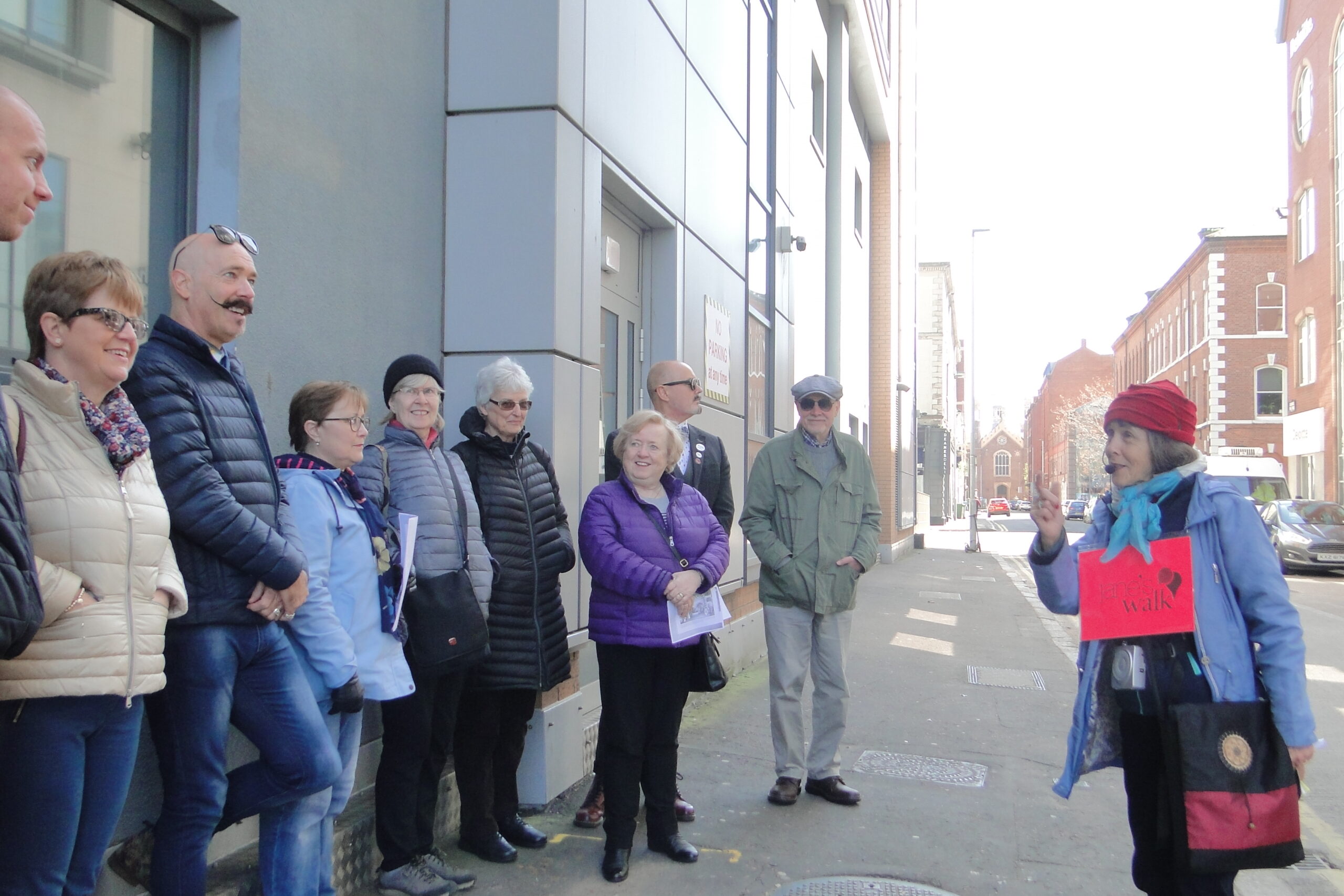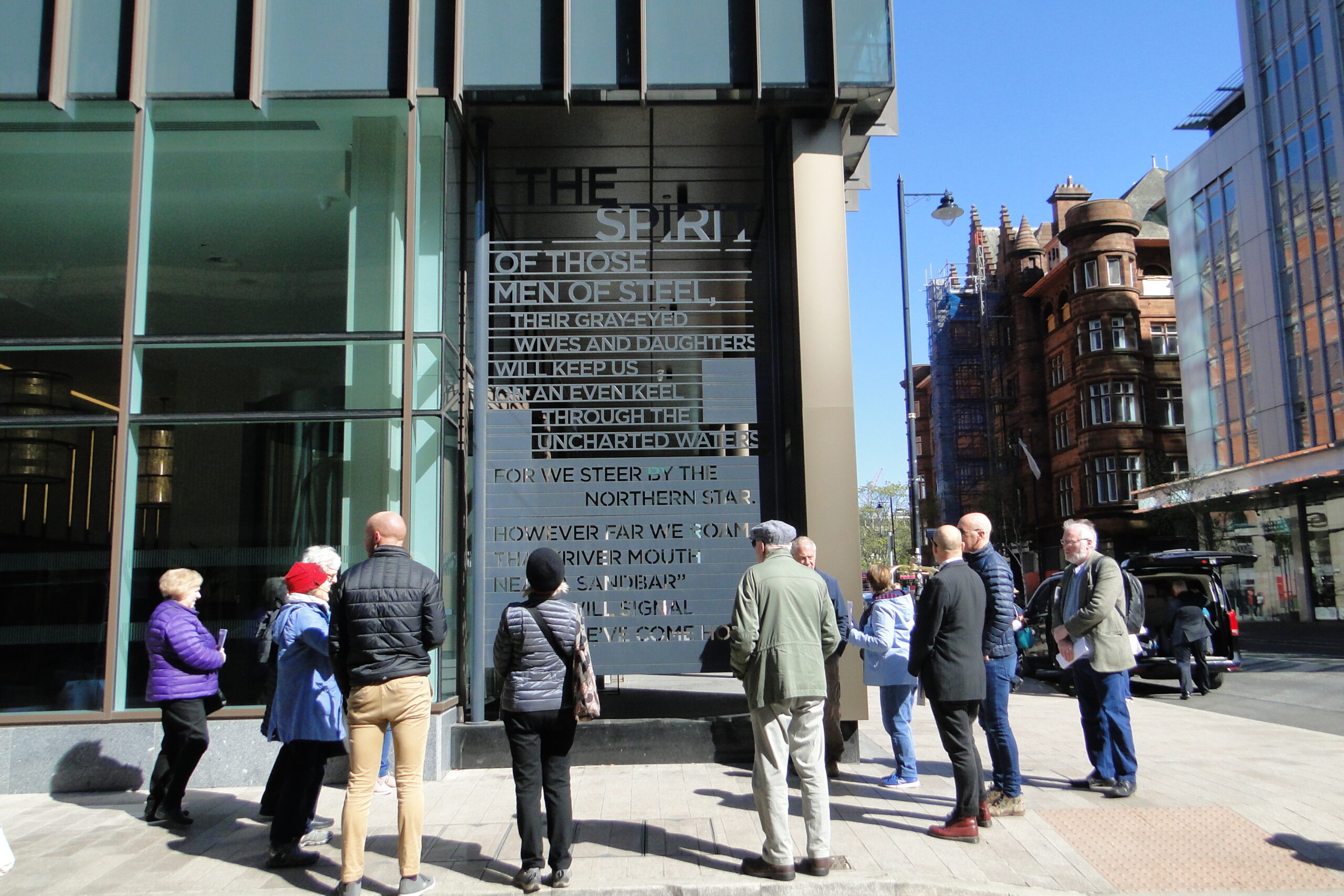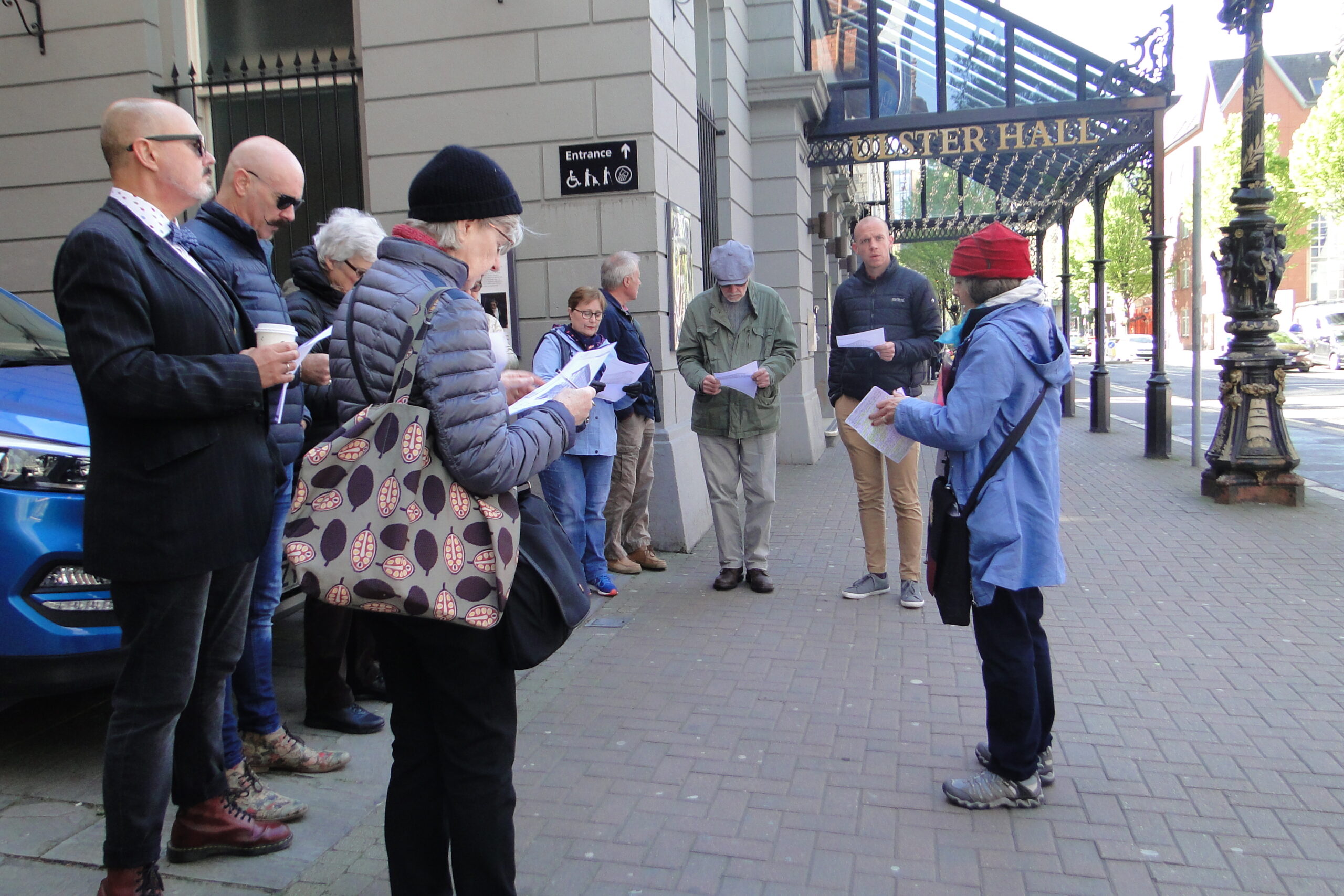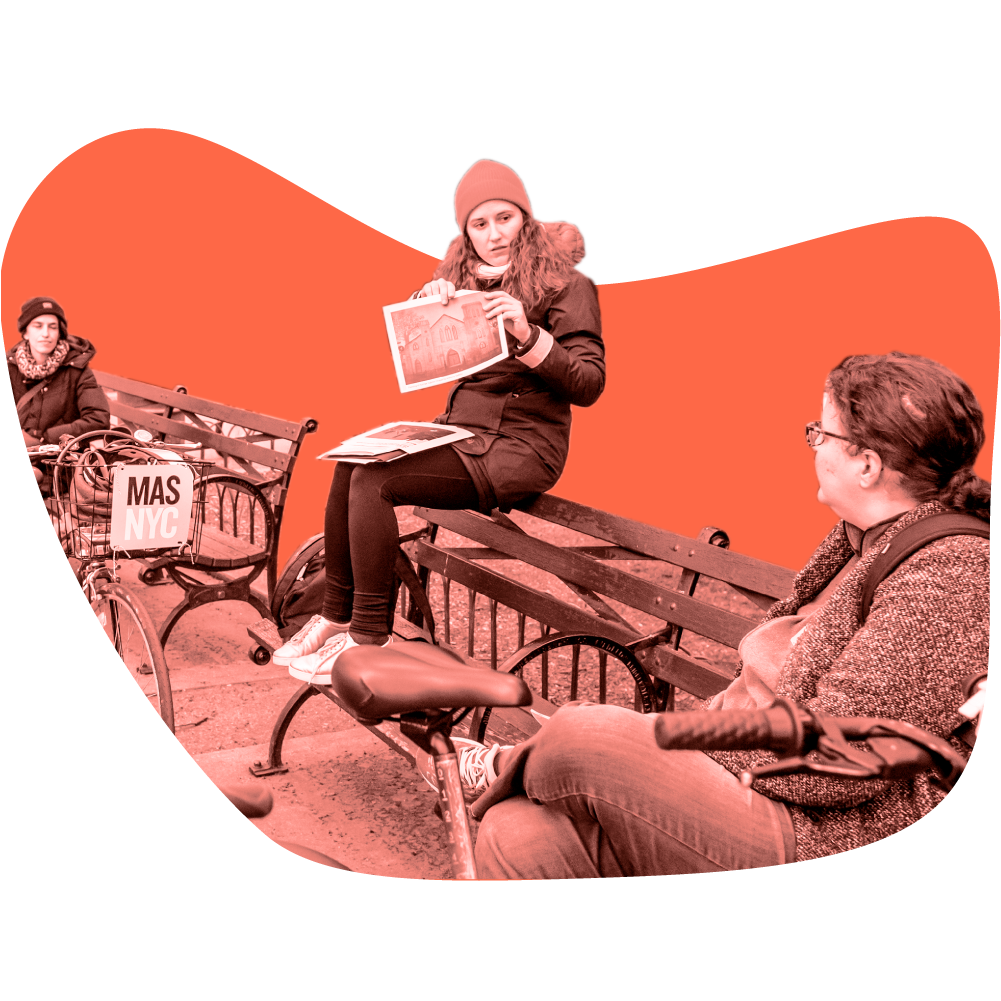
Tricia Keogh-Hodgett
Belfast, the capital city of N.Ireland, is a compact, accessible, and walkable urban area. It has, as backdrops, hills and cranes. It offers music, memories and much more. It was once described as a place apart.
Walk Stories
Walk stories are chronicles of moments, ideas, insights, and images from a Jane’s Walk, curated and submitted by local participants, walk leaders, and city organizers. Want yours to be the first one here? Share your experience with us below.
May 2015 – Changing Spaces
Walk Leader: Tricia Keogh-Hodgett





Northern Ireland’s first ever Jane’s Walk was held this year in its capital, Belfast, a unique, intriguing and frequently contradictory city. The walk began right in the heart of the city, on the west side of the City Hall, a building which first opened in 1906, and finished in the recently regenerated and rebranded Cathedral Quarter. This is an area which for decades had been left vacant, derelict and neglected, but which has recently been transformed into a distinctive part of the city centre with a dynamic mix of arts, heritage, business, hospitality and housing.
The walk thus took both a look back and a step forward and along the way the participants, drawing on their own experiences and observations, eagerly discussed how spaces had been used over the years and how those uses had frequently evolved in imaginative ways.
Near the City Hall, for example, we looked at the Scottish Provident Building built in the late 19th century for offices and commercial use with its stone carvings depicting the city’s industries, such as shipbuilding. From the same era, we also looked at the Robinson and Cleaver building, once an upmarket department store. Both these buildings have changed their function – the Scottish Provident building now incorporates a trendy bar and a supermarket; Robinson and Cleaver functions today as a restaurant and café – but both still survive in all their magnificence.
We also saw how public art is helping to redesign Belfast with eight huge sculptural masts and banners installed down one side of the city’s main thoroughfare, Donegall Place. Each is named after a ship built in the city’s once world-renowned Harland & Wolff shipyard, including the Olympic, the Oceanic, the Britannic and the tragically doomed Titanic.
Participants expressed their delight in being the first group to do a Jane’s Walk in Belfast, despite it being a very cold May morning. ”It’s always good to be a pioneer!” laughed one of the group which consisted of women and men, young and old, and both Belfast residents and visitors from out of town. When asked what adjectives they would use to describe the city they suggested “friendly,” “tragic,” “evolving,” “transformed,” “historic,” “eclectic,” and so on.
Many expressed the hope that this would be the first of a series of walks over the coming weeks – but they will of course have to wait until May 2016, for the second ever Jane’s Walk in Belfast!
May 2018 – Secret Streets of Belfast
City Organizer: Tricia Keogh-Hodgett
Walk Leader: Tricia Keogh-Hodgett
Text by: Tricia Keogh-Hodgett
Photographs by: Trevor Hodgett
An international group, of fourteen, comprising people from five different countries explored the Secret Streets of Belfast.
These Secret Streets, or Entries, are considered by some to be where Belfast started.
Participants were asked their opinions (both during the walk and afterwards on a questionnaire) on the current state of and function of the Entries and on planned changes and future use of them.
Some comments were; “this walk has encouraged and inspired me to use them more”.
“I like their quirkiness”
“Some have lost too many original features which is a shame…tradition and history should be kept”.
“Entries should be better maintained and brightened up eg. with more lighting.They could be enhanced a lot more eg find a way to restore the former archways”
May 2019 – Refits or Misfits: Part 1
City Organizer and Walk Leader: Tricia Keogh-Hodgett
Photographs by: Trevor Hodgett
A group of eleven participated in this walk; all but two were “locals” and several were new to the walks. A small area of central Belfast, about a quarter of a mile, was explored. We looked at four buildings and went into three of them. The group considered if the buildings, which were “refitted”, were a “fit” for Belfast. We discussed the advantages of retaining features from the original buildings. Memories were shared about former buildings on the sites, and opinions were expressed on the style and type of buildings for Belfast city centre. It was thought that, in general, the Refits were well managed and advantageous. The group was also in favour of retaining the heritage of the buildings by using e.g photographic displays or websites or information brochures. It was felt that there were no obvious Misfits. Also, the group were in favour of the buildings in the city centre being low-rise as too many tall buildings would change and darken the streetscape.

Did you participate in a Jane’s Walk in this city?

